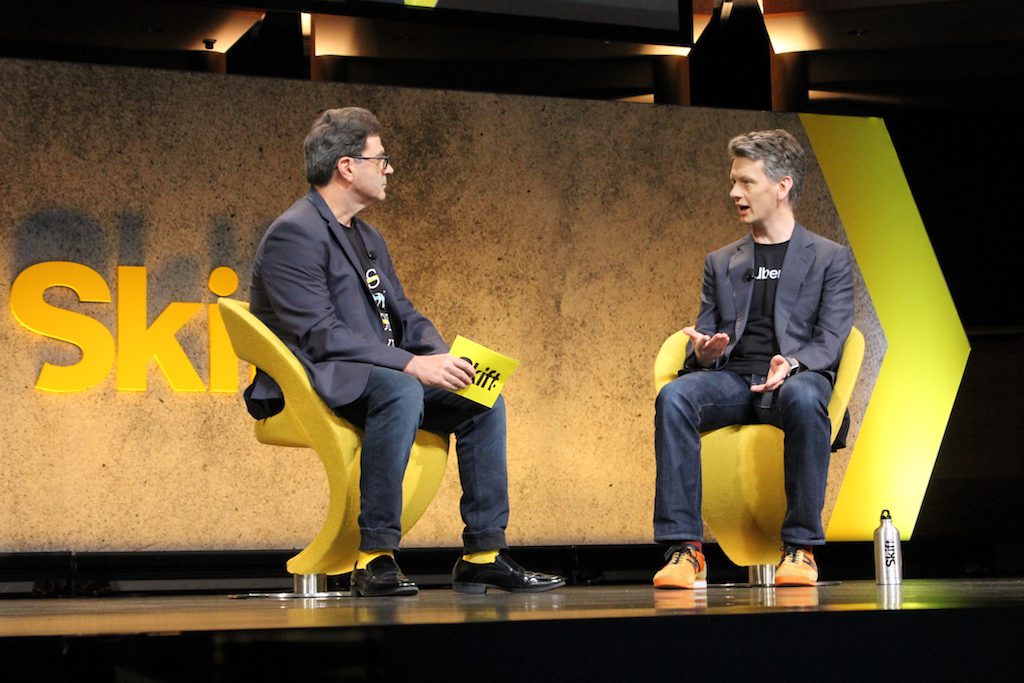Uber's Quest to Hit on Another Moonshot Product

Skift Take
Uber needs to fix its culture and hit another moonshot beyond ridesharing. Nobody is quite sure where it will come from, but the result of investments in flying cars, autonomous cars, and a logistics network for businesses will be clear soon.
Uber had a very bad 2017. The departure of founder and CEO Travis Kalanick under accusations of improper behavior and discrimination were only the tip the iceberg amid security breaches, violence against riders and drivers, and an inability to turn a profit.
So how is the new regime headed by CEO Dara Khosrowshahi faring? Well, the turnaround is still in process, with a focus on reforming the company's toxic, sexist culture.
"Clearly, the opportunity for Dara and I to come in and take these roles wouldn't have happened if there weren't challenges in the company," said Barney Harford, Uber's chief operating officer and former CEO of online booking site Orbitz, at Skift Global Forum in New York on Friday. "(Last year) was a really bad year for the company. Dara has been very clear, he has set a very clear cultural value that we will do the right thing, a new commitment to the right behavior and a commitment to partnership with cities around the world to solve their problems. Twelve months in, we're making progress."
Harford detailed the steps the company is taking to attract more women and people of color to the organization to better reflect the customers it is serving around the world. At the same time, the vision of the company is expanding beyond ridesharing to leverage its network of drivers and couriers around the world.
Food delivery has been one of the recent bright spots over the last few years.
"The vision for Uber is redefining urban mobility, we think about mobility as a service, transportation for both people and things," said Harford. "When we think about the transportation of things, Uber Eats is an incredibly important part of the business, it is less than three years old and is the largest food delivery platform in the world outside China."
Harford disputed the notion that Uber is still hemorrhaging money to subsidize its market share in the global rideshare sector. Ridesharing is profitable, while Uber's research and development in the categories of autonomous vehicles, flying cars, safety features, and other areas are contributors to the company's inability to turn a profit.
"If we think about the business model broadly, it's important to understand the core rideshare business is solidly profitable and has been for the last five quarters," said Harford. "We are playing in an incredibly large category, a $6 trillion category, so we see in many of these adjacent areas a lot of growth areas. These are areas it makes sen
